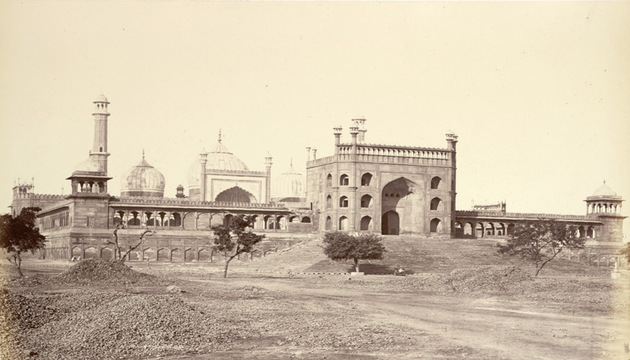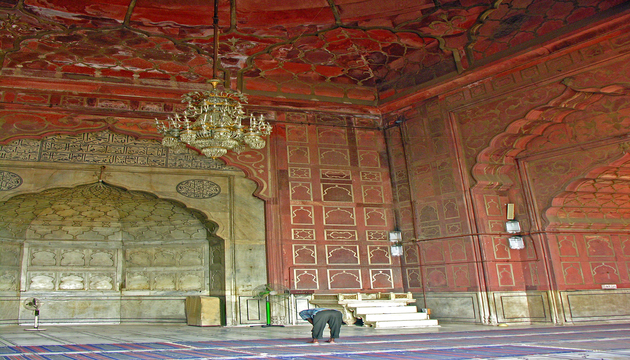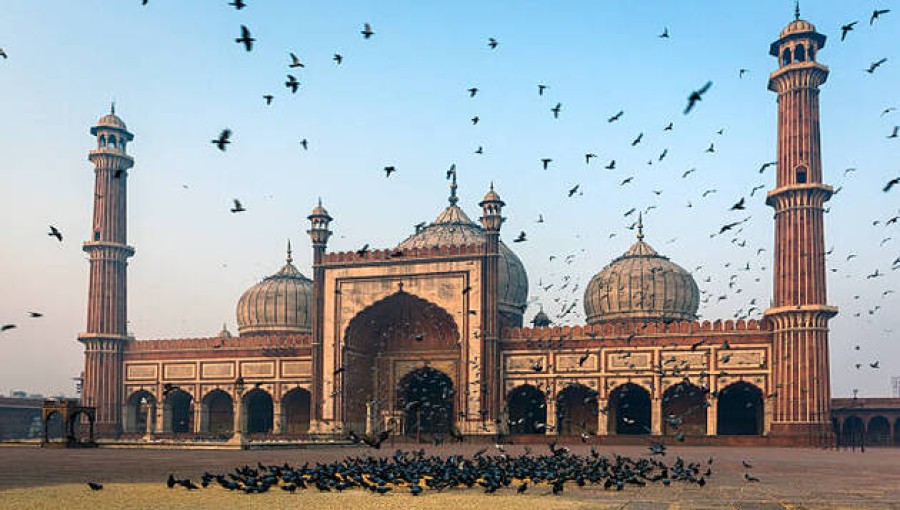Nestled in the bustling heart of Old Delhi, the Jama Masjid stands as a beacon of Islamic architecture, history, and culture. With its grand red sandstone facade and intricate details, this iconic mosque has been a symbol of religious devotion and cultural heritage for centuries.
Historical Origins and Construction
Commissioned by the illustrious Mughal Emperor Shah Jahan, the Jama Masjid, or Masjid-i-Jehān-Numā, was meticulously constructed between 1644 and 1656.

Under the guidance of the renowned architect Ustad Khalil, thousands of workers labored to bring to life this architectural masterpiece, blending Persian, Islamic, and Mughal influences. The construction, with its stunning red sandstone and white marble, exemplified the opulence of the Mughal era.
Architectural Marvels
The Courtyard and Minarets
At the heart of the Jama Masjid lies its expansive courtyard, spanning over 325 feet square, capable of accommodating up to 25,000 worshippers. Flanked by two majestic minarets rising 130 feet high, the eastern gateway serves as a grand entrance, once reserved for royal usage.
.jpeg)
The Prayer Hall
The grandeur of the Jama Masjid is further accentuated by its spacious prayer hall, measuring an impressive 90 by 200 feet.Adorned with intricate Persian calligraphy, the walls bear testament to the devotion and craftsmanship of its builders.Three magnificent marble domes grace the roof, symbolizing spiritual aspirations reaching towards the divine.

Symbolism and Significance
Beyond its architectural splendor, the Jama Masjid holds profound symbolism and significance. During the Mughal reign, it served as the imperial mosque, a tangible symbol of Islamic power and cultural identity across India.Even through the colonial era, its towering presence remained a testament to the enduring legacy of Islamic heritage in the subcontinent.
.jpeg)
Legacy and Contemporary Relevance
The Jama Masjid is still a thriving place of worship and a highly respected cultural icon in Delhi today. Its continued relevance is demonstrated by its active participation in religious and communal life. Also referred to as the "world-reflecting mosque," or Masjid-i-Jahān-Numā, it crosses national and cultural barriers to represent a universal legacy that is appealing to individuals from all walks of life.
.jpeg)
As visitors and worshippers alike traverse the hallowed halls of the Jama Masjid, they are reminded not only of its architectural splendor but also of its deeper spiritual and cultural significance. In a world often divided by differences, this iconic mosque serves as a powerful reminder of our shared history and the imperative of mutual understanding and respect. Let us draw inspiration from its timeless beauty to build bridges, celebrate diversity, and foster peace in our interconnected world.































Comment: